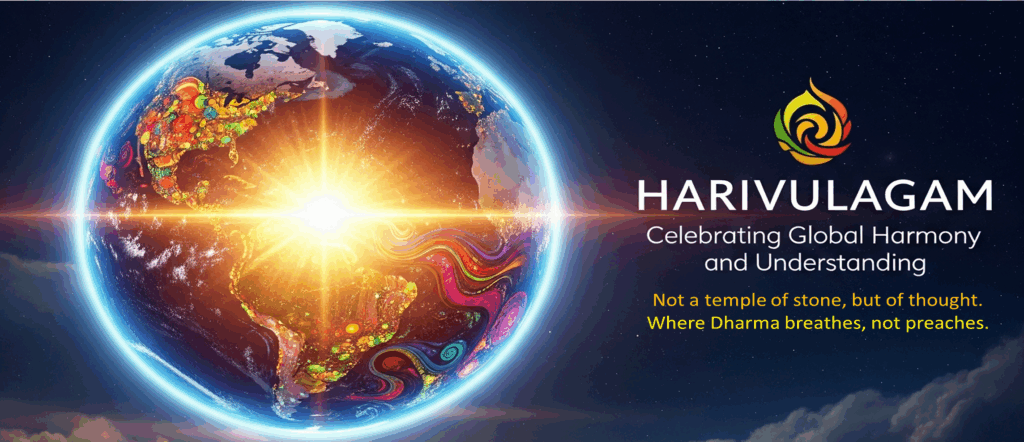In the vast and diverse landscape of Hindu philosophy, the ultimate goal of human life is Moksha, liberation from the cycle of birth, death, and rebirth (Samsara) and the attainment of a state of absolute freedom, peace, and union with the divine. To achieve this profound state of being, ancient Hindu scriptures, particularly the Bhagavad Gita, outline four primary paths, or yogas: Bhakti Yoga (the path of devotion), Jnana Yoga (the path of knowledge), Karma Yoga (the path of selfless action), and Raja Yoga (the path of royal meditation).

While these paths appear distinct in their approach and practices, they are ultimately understood to be different avenues leading to the same summit of spiritual realization. They cater to the varied temperaments and predispositions of individuals, offering a spiritual framework that is both personal and universal.
## The Four Paths to Moksha
Here is a detailed exploration of each of the four paths to Moksha:
Bhakti Yoga: The Path of Devotion
Bhakti Yoga is the path of love and devotion. It is considered the most direct and accessible path for many, as it centers on the cultivation of an intense, loving relationship with a personal form of God. The devotee, or bhakta, channels their emotions and surrenders their ego to a chosen deity, such as Vishnu, Shiva, Krishna, or the Divine Mother.
Key Practices:
- Shravana: Listening to scriptures and stories of the divine.
- Kirtana: Singing and chanting the names and glories of God.
- Smarana: Constant remembrance and meditation on the divine form.
- Pada Sevanam: Service to the holy feet of the Lord.
- Archana: Ritualistic worship and offerings.
- Vandana: Prostration and prayer.
- Dasya: Cultivating the attitude of a servant of God.
- Sakhya: Fostering a friendship with the divine.
- Atma Nivedana: Complete self-surrender.
Through these practices, the bhakta’s heart is purified, and the mind becomes single-pointedly focused on the divine. This unwavering devotion dissolves the ego and the sense of separation from God, leading to the experience of oneness and liberation.
Jnana Yoga: The Path of Knowledge
Jnana Yoga, also known as the path of wisdom, is the intellectual and philosophical approach to liberation. It is a path of self-inquiry and discrimination, aimed at realizing the true nature of the self (Atman) and its identity with the ultimate reality (Brahman). This path is often considered the most difficult, requiring a sharp intellect and a deep capacity for contemplation.
Key Practices:
- Viveka: The ability to discriminate between the real (Atman/Brahman) and the unreal (the material world).
- Vairagya: Dispassion and detachment from worldly objects and desires.
- Shatsampat: The six virtues:
- Shama: Tranquility of the mind.
- Dama: Control of the senses.
- Uparati: Cessation of worldly activities.
- Titiksha: Forbearance and endurance.
- Shraddha: Faith in the scriptures and the guru.
- Samadhana: Concentration of the mind.
- Mumukshutva: An intense longing for liberation.
- Sravana, Manana, and Nididhyasana: Listening to the teachings of the sages, reflecting upon them, and meditating on the truth of “Aham Brahmasmi” (I am Brahman).
Through rigorous self-analysis and meditation, the jnani pierces through the veil of ignorance (avidya) and realizes their essential nature as pure consciousness, thereby attaining Moksha.
Karma Yoga: The Path of Selfless Action
Karma Yoga is the path of action performed without attachment to the fruits of the labor. It is the art of acting in the world with a spirit of selfless service, offering every action as a sacrifice to the divine. This path is ideal for those who are active by nature and engaged in worldly responsibilities.
Key Principles:
- Nishkama Karma: The performance of one’s duty without any selfish motive or expectation of reward.
- Detachment from Results: The focus is on the action itself, not on the success or failure of the outcome.
- Surrender to a Higher Power: Actions are performed as an offering to God or for the welfare of humanity.
- Equanimity: Maintaining a balanced state of mind in both pleasure and pain, success and failure.
By performing actions with this attitude, the karma yogi purifies their heart and mind, breaking the chains of karma that bind them to the cycle of rebirth. The ego is gradually effaced, and the individual realizes their interconnectedness with all of creation, leading to liberation.
Raja Yoga: The Path of Royal Meditation
Raja Yoga, often referred to as the “royal path,” is the science of mind control and meditation. Systematized by the sage Patanjali in his Yoga Sutras, this path provides a structured, eight-limbed approach to still the fluctuations of the mind and achieve a state of deep meditative absorption (samadhi).
The Eight Limbs (Ashtanga Yoga):
- Yama: Ethical disciplines (non-violence, truthfulness, non-stealing, continence, and non-covetousness).
- Niyama: Self-observances (purity, contentment, austerity, self-study, and surrender to God).
- Asana: Steady and comfortable physical postures.
- Pranayama: Control of the vital life force (prana) through breathing exercises.
- Pratyahara: Withdrawal of the senses from external objects.
- Dharana: Concentration on a single point.
- Dhyana: Uninterrupted meditation.
- Samadhi: A state of super-consciousness where the individual self merges with the universal consciousness.
Through the systematic practice of these eight limbs, the raja yogi gains mastery over their mind and senses, leading to the direct experience of their true self and the attainment of Moksha.
## The Convergence of the Paths: One Destination, Many Routes
The four paths of yoga are not mutually exclusive; rather, they are complementary and often intertwined. A devotee on the path of Bhakti will naturally engage in selfless service (Karma Yoga) for their beloved deity. A Jnani, through their deep understanding, will act in the world with detachment (Karma Yoga). A Karma Yogi’s selfless actions can lead to a devotional attitude (Bhakti Yoga). And a Raja Yogi’s meditative practices can cultivate both devotion and wisdom.
The Bhagavad Gita beautifully illustrates this synthesis. Lord Krishna explains to Arjuna that while the paths may appear different, they all lead to the same ultimate reality. The choice of path depends on the individual’s temperament and stage of spiritual development. Just as different rivers flow through varied landscapes but ultimately merge into the same ocean, so too do these four paths converge at the single destination of Moksha.
The underlying principle connecting all four paths is the dissolution of the ego, the false sense of “I” and “mine” that is the root of all suffering and bondage.
- Bhakti Yoga dissolves the ego through love and surrender.
- Jnana Yoga dissolves the ego through intellectual inquiry and the realization of the true self.
- Karma Yoga dissolves the ego through selfless action and detachment.
- Raja Yoga dissolves the ego through the mastery and transcendence of the mind.
Therefore, regardless of the path one chooses, the journey is one of self-purification and the transcendence of the limited self. The ultimate goal is the experiential realization of the divine, a state of being that is beyond words and concepts, a state of eternal freedom and bliss. In essence, the four paths are four different expressions of the same fundamental human aspiration for liberation.


Leave a Reply